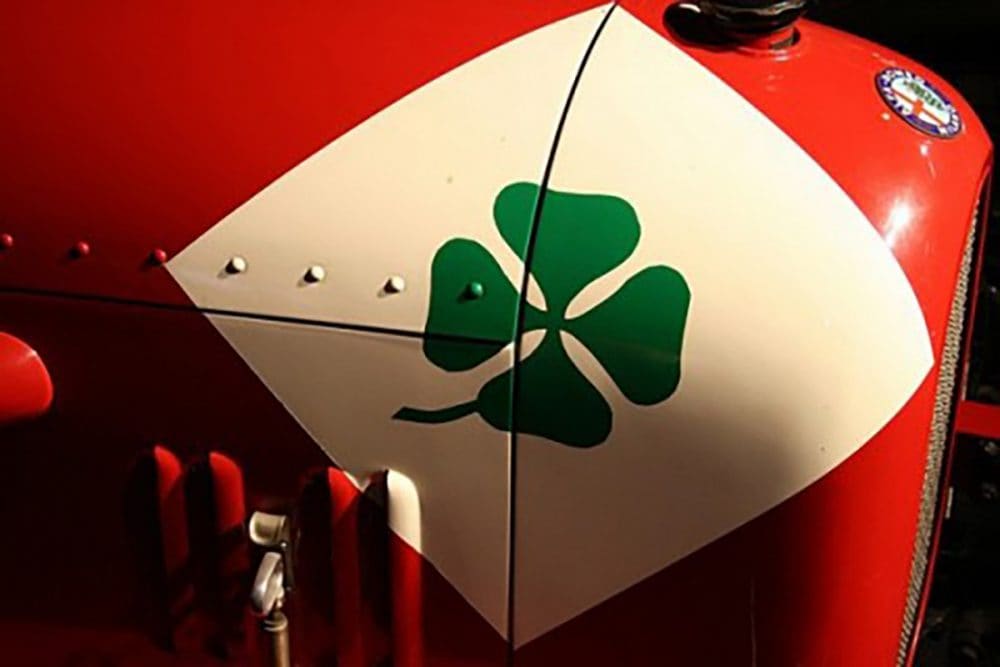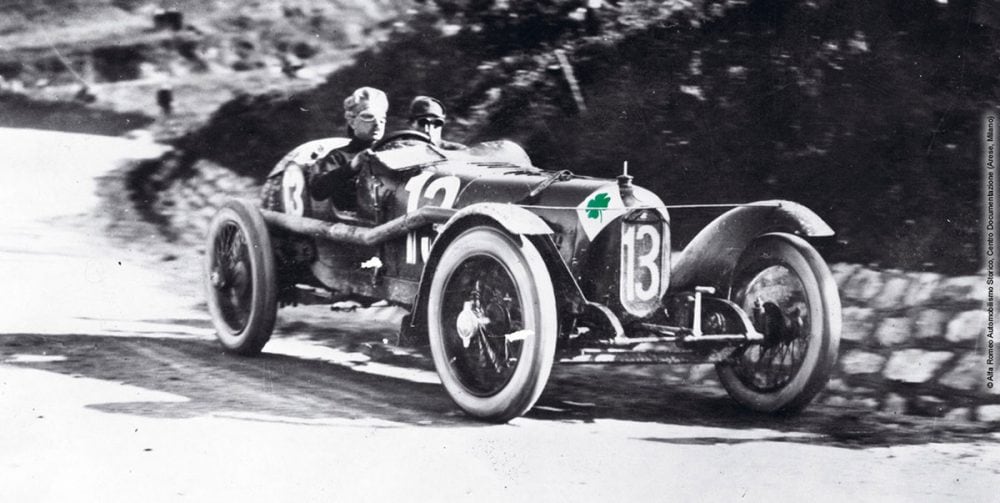For nearly one hundred years, the ‘Quadrifoglio Verde’, Italian for a four-leaf clover, has been the symbol decorating Alfa Romeo’s racing and high-performance streetcars. The clover contained in a white triangle can be typically found on the side panels of the car, above or behind the front wheels, or on the front wings in most modern models.
The green four-leaf clover made its debut on the Alfa Romeo RLTF at the 1923 Targa Florio race. The Targa Florio was held in Sicily and regarded as the most prestigious auto racing competition of its time. This competition was so fierce that Giuseppe Merosi, Italian automobile engineer and designer, specially prepared four RL Targa Florio automobiles for the esteemed event. And up until this race, Alfa Romeo eluded really any notable success in competitions, a tale of misfortune.

The drivers behind the wheel of Merosi’s developed cars were Antonio Ascari, Enzo Ferrari, Giulio Masetti, and Ugo Sivocci. The great Sivocci was renowned for technical competence but his poor luck earned him the moniker of “I’eterno secondo” or the eternal second. To combat the misfortune, Sivocci painted the original white diamond with a four-leaf clover (the symbol of luck) on his RL Targa Florio before the race.

In the mountains of Madonie, Antonio Ascaria, Sivocci’s teammate, was leading the race while Sivocci trailed behind him. Suddenly, just 200 meters from the finish line, Ascari’s Alfa Romeo broke down. With the help of spirited mechanics, he was able to get back in the race with a fully running car. In the grand excitement of things, Ascari’s mechanics hopped into the vehicle and crossed the finish line with Ascari. This ultimately led to a disqualification. Event organizers made Ascari restart at the point where he broke down which allowed Sivocci to catch up and finish the race in first place. Call it superstition, but the four-leaf clover did its job that day!
Tragically, a few months later, Ugo Sivocci died in an accident while practicing for the first European Grand Prix. Due to regulatory reasons, his Alfa Romeo P1 was not embellished with the four-leaf clover symbol - sealing his fate of bad luck. Out of respect, Alfa Romeo withdrew from the Grand Prix race and would then paint the ‘Quadrifoglio Verde’ on all of its race cars.
Another tragedy clouded Alfa’s reputation in 1933 when Guiseppe Campari hit a patch of oil and crashed at the Monza Grand Prix. Three other top drivers died during the 1933 Monza Grand Prix: Bacibub Bizacchini, Stanislaw Czaykowski, and Giuseppe Campari. Enzo Ferrari was the only one of the four Alfa Romeo drivers to survive and would eventually start producing his own cars in 1947.
Present-day, the leaves on the quadrifoglio symbolize each of Alfa Romeo's original four drivers. Designers changed the diamond, or what some refer to as the ‘white square’, to a triangle to symbolize the loss of one of their original drivers. Today, the quadrifoglio adorns the new Giulia and Stelvio, embellishing the vehicles with a piece of special Alfa Romeo history.